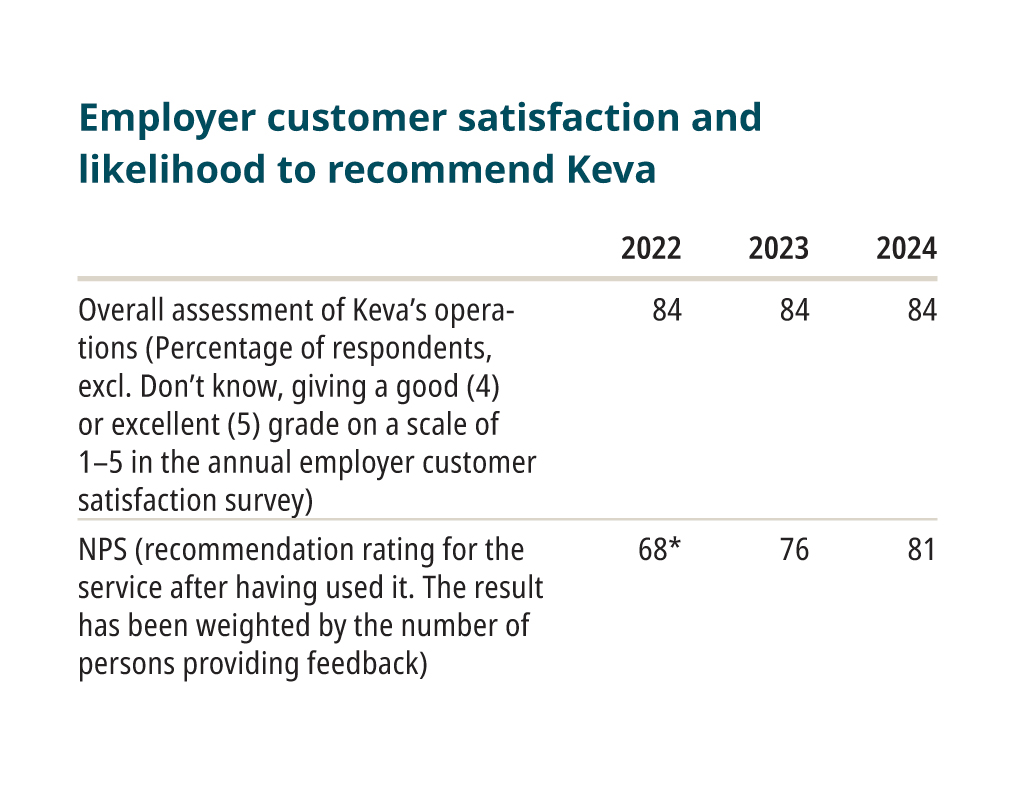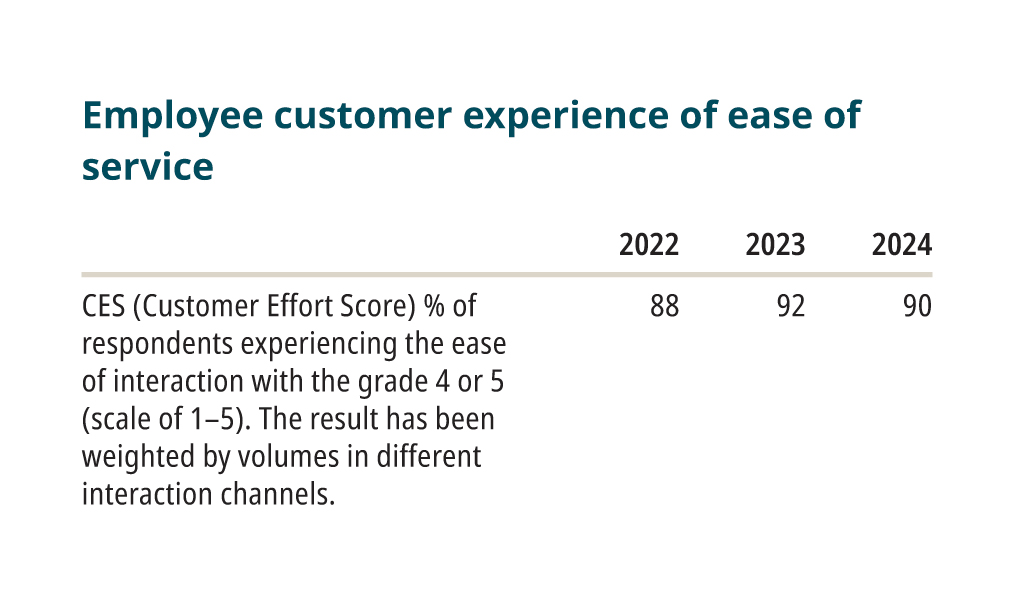We take good care of our customers

We take care of the earnings-related pension cover of public sector employees.
We ensure the uninterrupted income of persons retiring.
We offer employees support and solutions when their work ability deteriorates.
We support employers in understanding the risk of incapacity for work and prolonging careers.
We ensure the accessibility of our services and take into account the diversity of our customers.
We are responsible for the livelihood of hundreds of thousands of Finns
Keva’s mission is to secure the uninterrupted livelihood of employees retiring from the public sector. Good customer experience supports and complements this goal.
Old-age pensions account for around 70% of the pension applications Keva processes. In addition, we process partial early old-age pension, disability pension, survivors’ pension and vocational rehabilitation applications. Keva processes applications for all pension types faster than the average for the private sector.
We tell our customers that they don’t have to retire when they reach the old-age pension age. The longer a person works, the more pension they accrue – earned income increases the pension until the age of 68 and for persons born after 1957 until the age of 69.
For more information about pension options
We support work ability management – the outcome is lower costs
Successful work ability management results in an improvement in the wellbeing and productivity of work communities and lower disability costs.
We work with employer customers to build cooperation networks where new services are developed together and we also pursue lasting and effective solutions to maintain work ability and extend careers.
Keva’s services include the development of processes, structures, management and corporate culture aimed at strengthening work ability.
We utilise researched information in the development of services. Keva has its own research function and studies are also carried out in partnerships and as an outsourced service. In addition, we utilise information about work ability management and the work ability situation in the public sector produced by others.
Securing uninterrupted livelihood
Our goal is that employee customers do not incur a break in their livelihood when they transit from work to old-age or some other pension. This goal is achieved when customers submits their old-age pension applications to Keva about two weeks before retiring.
Online services smooth the processing of applications: pension decisions are made as quickly as possible and pensions can be paid on time. It’s advisable to make the application through the MyPension online service. Also changes to pension payment, such as bank account information, are easily and securely dealt with via online services.
- To the My Pension service page (available in Finnish and in Swedish)
The number of online applications remained roughly unchanged compared to 2023, with around 65% (2023: 62%) of all applications arriving through the My Pension service. More than 85% of (84%) of old-age pension applications and around 95% (95%) of partial early old-age pension applications were made electronically.
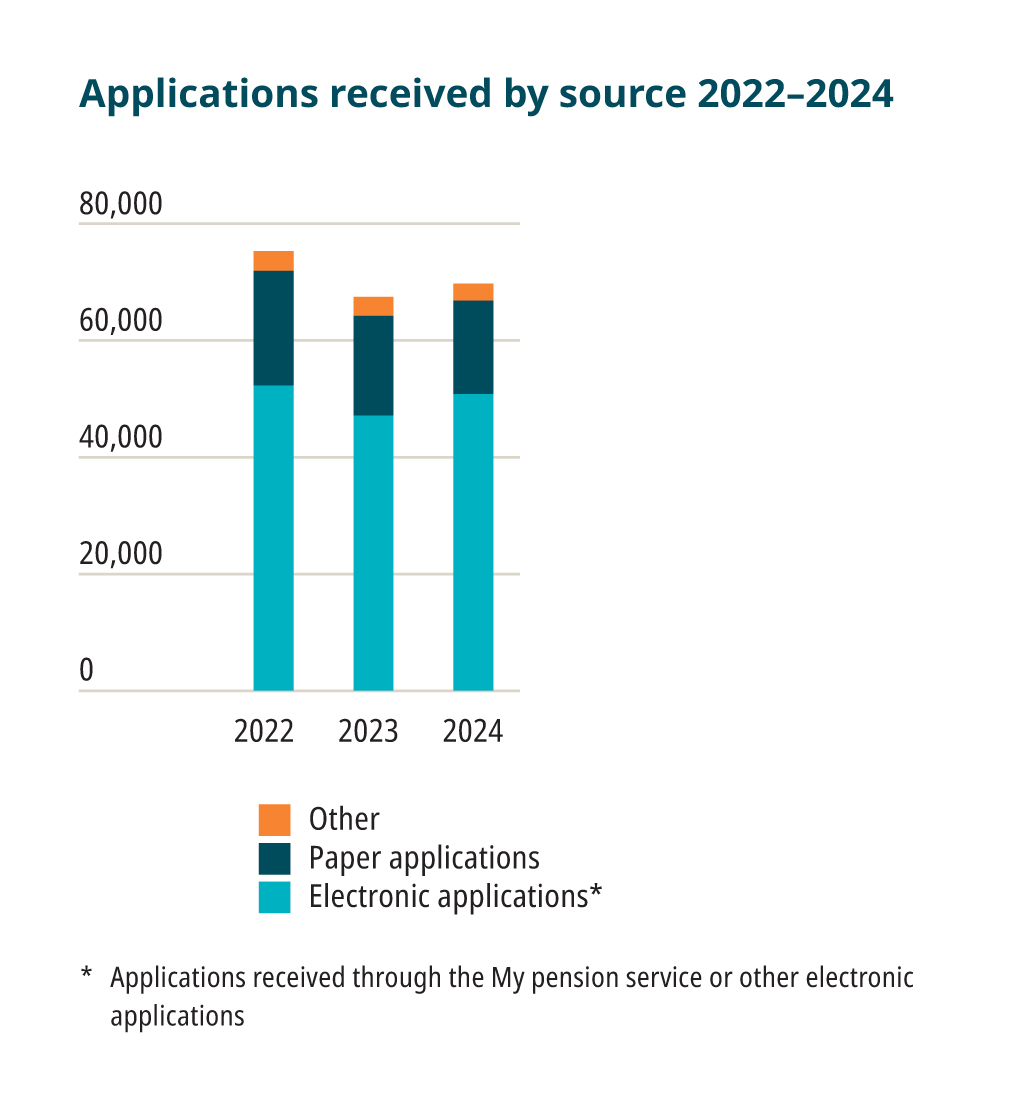
Vocational rehabilitation can help to keep working longer
Our statistics indicate that rehabilitation is successful for eight out of ten vocational rehabilitation customers and after rehabilitation the customer is available on the labour market.
Extending careers is a better alternative for employee and employer customers as well as from the earnings-related pensions system perspective that premature retirement.
- From the employee perspective, a pension is always lower than a salary and each working month adds to the pension.
- From the employer and earnings-related pension system perspective, an employee who retires because of work disability or for some other reason before old-age retirement age gives rise to costs.
An employee who is at risk of disability pension can receive vocational rehabilitation. The aim is that through vocational rehabilitation a person moves to a job that is suitable for his or her health thereby enabling career to be extended for as long as possible.
The interventions are work try-outs, job coaching, training and business subsidies to become self-employed. If these interventions are insufficient, the employee may apply for a disability pension, which is the last option.
During vocational rehabilitation, we secure the person’s livelihood and compensate costs arising from rehabilitation. The earnings-related pension insurance does not compensate medical rehabilitation as vocational rehabilitation.
Vocational rehabilitation is a less known alternative than a disability pension both to physicians and other healthcare professionals and to the general public. This is why we train healthcare professionals and tell public sector employers about rehabilitation as an alternative to disability pension.
- For information about vocational rehabilitation
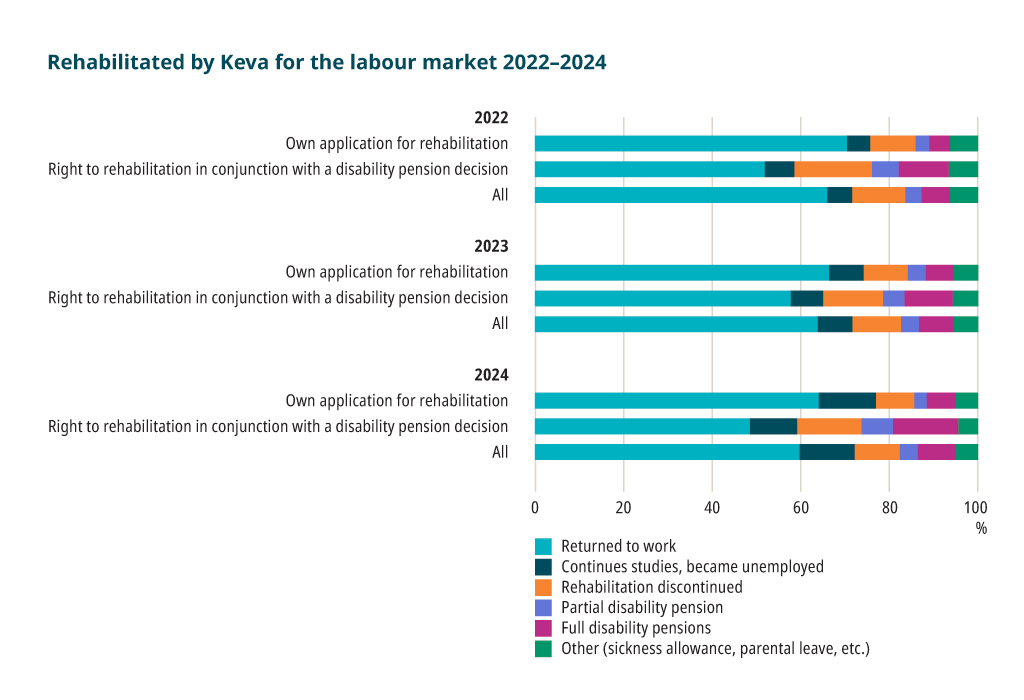
Processing times determine the service level
We have set targets for old-age, partial early old-age, survivors’ and disability pension application processing times.
We address the equality of applicants in the processing of disability and other discretionary pensions and the stability of the decision practice. We oversee and develop the equality of the decision practice through advance oversight.
Looking ahead, we aim to provide employee customers with more information about how and at what stage the processing of their application is progressing.
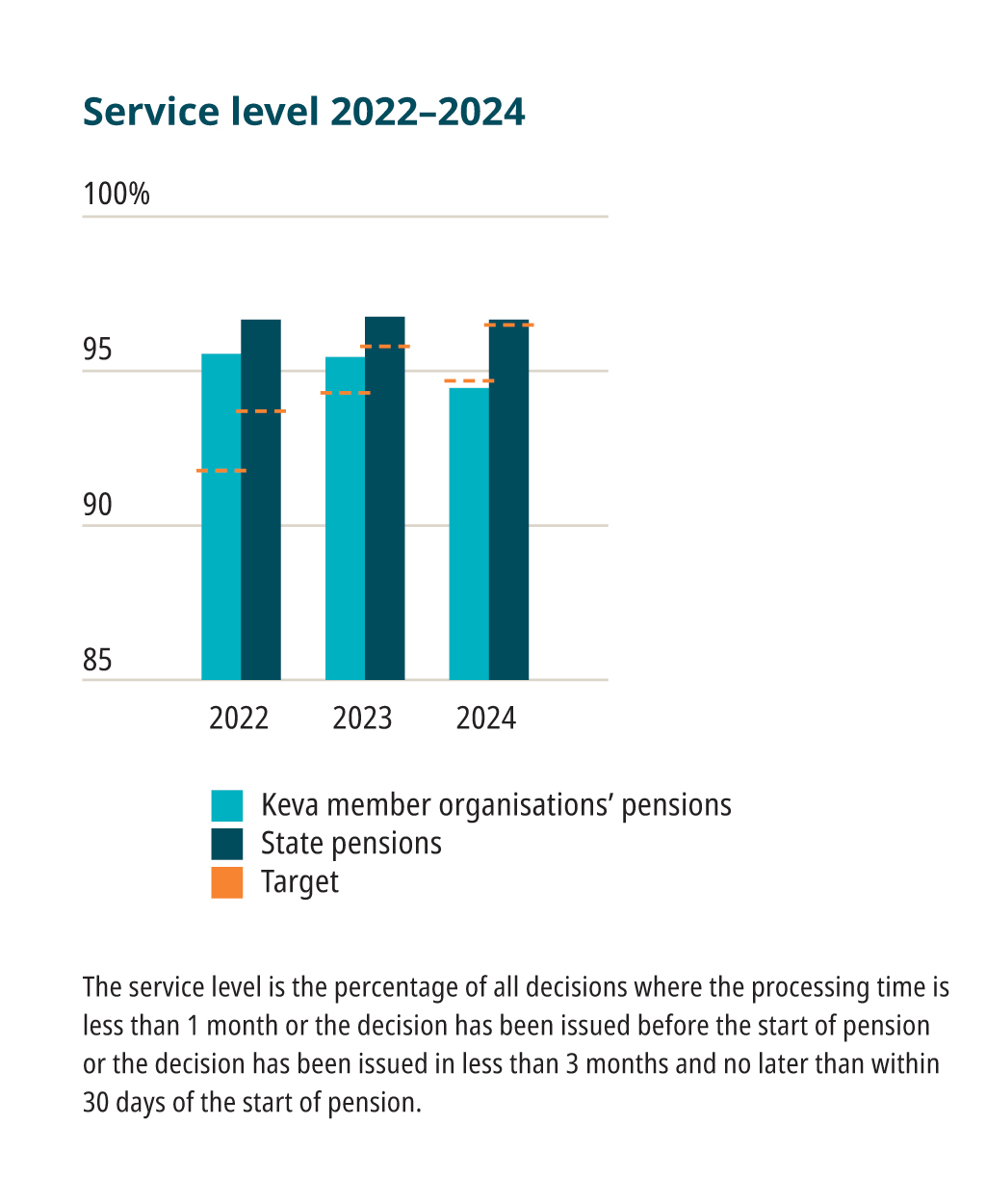
Customer experience of employee and employer customers
Customer experience is good when customers feel they have received the services they need smoothly – and taking into account his or her situation and needs as well as possible.
Our employer customers value cooperation with Keva as well as the overall benefit from the services and the effectiveness of services.
We follow and measure the customer experience of employee and employer customers. The indicators we use are customer satisfaction indicators, quality control indicators relating to pension decisions and payment as well as the user numbers of online service channels.
